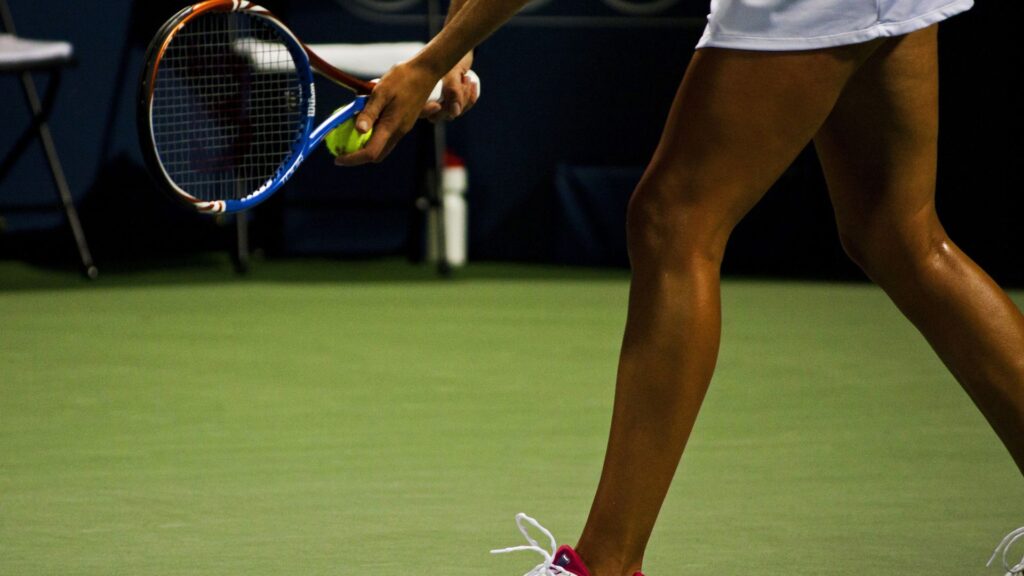Wimbledon is not only the oldest tennis tournament in the world, it’s also one of the most physically demanding. The slick grass surface, high-pressure atmosphere, and often unpredictable weather create a perfect storm for injuries. Over the years, several famous players have seen their Wimbledon dreams dashed by untimely injuries. Here’s a look at some of the most notorious and career-defining injuries to occur on the lawns of SW19.

Serena Williams (2021) Slip and emotional exit
In one of the most heartbreaking scenes in recent tennis history, Serena Williams slipped on Centre Court during her first-round match and was forced to retire in tears. The seven-time Wimbledon champion had just returned from injury and was considered a contender.
Serena sustained a hamstring injury after slipping awkwardly on the grass, which had already caused concern among players due to the wet weather. Serena’s inability to continue marked a deeply emotional moment, as it may have been her final appearance at Wimbledon.
Bethanie Mattek-Sands (2017) Knee injury
American doubles specialist Bethanie Mattek-Sands, suffered one of the most graphic and unforgettable injuries in Wimbledon history during a second-round match on Court 17. Her cries of “Help me!” echoed through the stadium.
Bethanie dislocated her kneecap and ruptured her patella tendon after slipping near the net. The injury required immediate on-court medical attention, surgery, and a long rehabilitation. It was a shocking and painful reminder of the risks involved in pro tennis.
Novak Djokovic (2017) –Elbow injury
Novak Djokovic entered Wimbledon 2017 battling discomfort in his serving arm. Though he advanced to the quarterfinals, the pain became too much, and he retired mid-match, an unusual move for the typically resilient Serb.
Djokovic, was dealing with a chronic right elbow injury that had been worsening over the season. After Wimbledon, he took a six-month break from tennis to fully recover, later admitting the injury had been affecting him for over a year.
Rafael Nadal (2009 & 2012) Knee injury
In 2009, Rafael Nadal shocked fans when he withdrew from Wimbledon just days before the tournament began. It was the first time a reigning men’s champion didn’t defend his title in nearly a decade.
Nadal’s knees were suffering from tendinitis, a condition that plagued him for years. He later returned but again struggled in 2012, exiting early and taking another extended break. Wimbledon’s low-bounce grass surface often proved particularly harsh on his joints.
Andy Murray (2017 Onward) Hip problem
Wimbledon 2017 marked a turning point for hometown hero Andy Murray. Despite entering as the defending champion, he clearly wasn’t moving well and lost in the quarterfinals to Sam Querrey.
Murray was dealing with a serious hip problem that had been building for months.
Following Wimbledon, he missed months of competition, underwent multiple surgeries, and even contemplated retirement.
Martina Hingis (2001) Ankle injury
At the height of her career, Swiss star Martina Hingis was forced to cut her 2001 Wimbledon campaign short after a painful accident during a third-round match.
Hingis suffered a torn ankle ligament after rolling her ankle on the grass. The injury required surgery and sidelined her for the remainder of the season, disrupting her dominance in the women’s game.
While injuries can never be eliminated in a physically demanding sport like tennis, there are ways to reduce the risk, especially when playing on fast, low-traction surfaces like grass. Here are some of the best strategies to stay healthy and match-ready:
Firstly, let’s try to prevent unnecessary slips and falls. Using grass-court tennis shoes with appropriate grip patterns designed for traction on slick turf will lower the risk of those nasty slips.
Stretching is super important, as with any type of exercise, stretching can prevent injuries and help activate your muscles, particularly the glutes, hamstrings and calves, which will ultimately improve balance and increase blood flow.
Knee injuries are common on the court and players sometimes wear a knee brace to add additional stability while playing. It’s also important to make sure you allow enough time to recover from training sessions or matches. Our bodies need time to rejuvenate and recover, and if we don’t allow this, an injury is more likely to occur!
Along with our knees, the other parts of our bodies that are put to work are the lower back, core, shoulders, arms and wrists. Exercising these areas will help on the court and help prevent injury. Some players, along with tennis, also take up other physical activities such as swimming, yoga and cycling to keep their bones strong and healthy.
Remember, listen to your body, pain is a signal and never push through sharp or lingering discomfort.
Whether you’re playing a Sunday league match or dreaming of Centre Court, these strategies can go a long way in protecting your body. Wimbledon may be where legends are made, but it’s also where caution and preparation are key.
If you have had an injury on the courts and need further information, please do not hesitate Mr Shah Khan’s office





